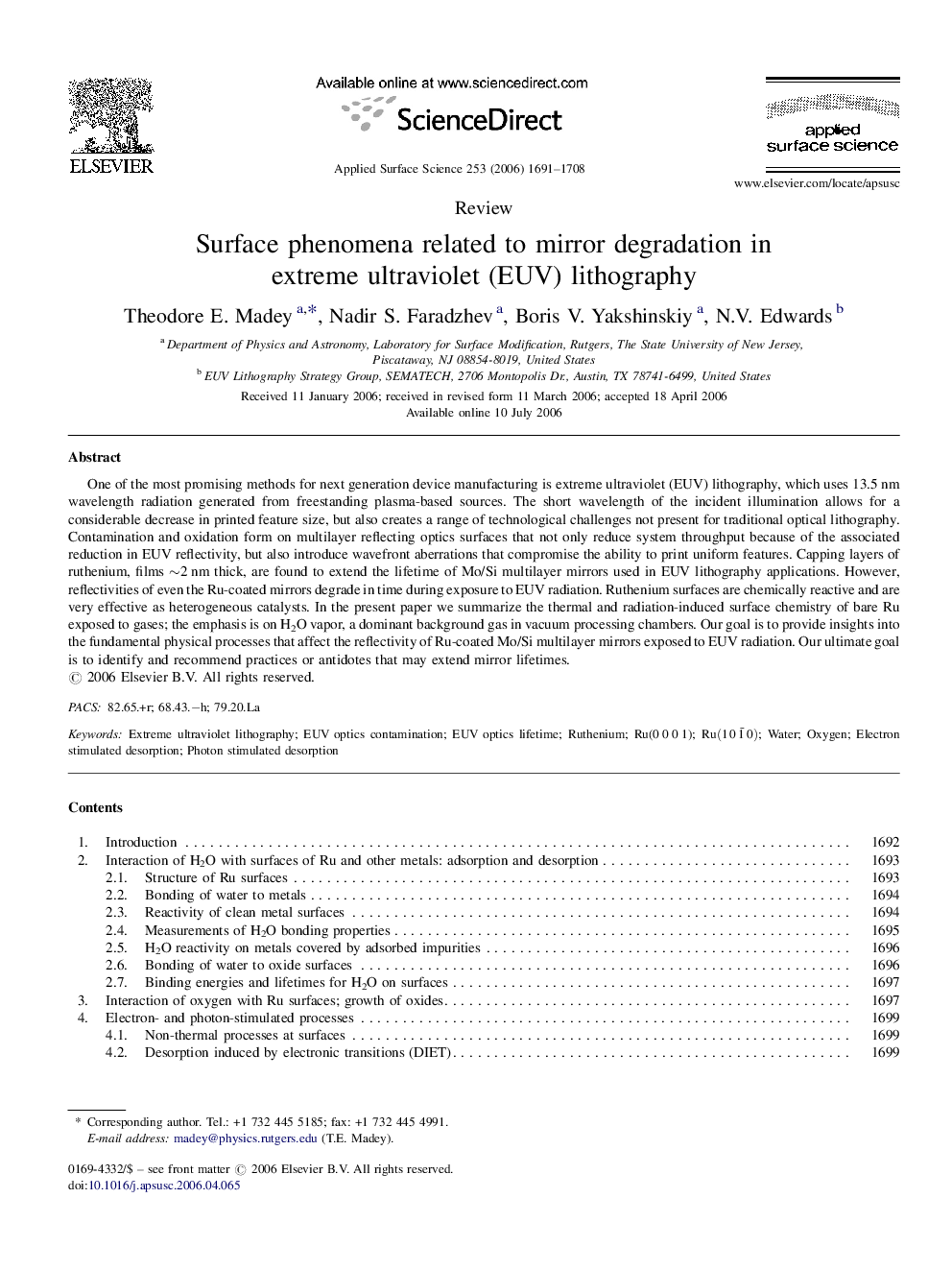| Article ID | Journal | Published Year | Pages | File Type |
|---|---|---|---|---|
| 5370003 | Applied Surface Science | 2006 | 18 Pages |
One of the most promising methods for next generation device manufacturing is extreme ultraviolet (EUV) lithography, which uses 13.5Â nm wavelength radiation generated from freestanding plasma-based sources. The short wavelength of the incident illumination allows for a considerable decrease in printed feature size, but also creates a range of technological challenges not present for traditional optical lithography. Contamination and oxidation form on multilayer reflecting optics surfaces that not only reduce system throughput because of the associated reduction in EUV reflectivity, but also introduce wavefront aberrations that compromise the ability to print uniform features. Capping layers of ruthenium, films â¼2Â nm thick, are found to extend the lifetime of Mo/Si multilayer mirrors used in EUV lithography applications. However, reflectivities of even the Ru-coated mirrors degrade in time during exposure to EUV radiation. Ruthenium surfaces are chemically reactive and are very effective as heterogeneous catalysts. In the present paper we summarize the thermal and radiation-induced surface chemistry of bare Ru exposed to gases; the emphasis is on H2O vapor, a dominant background gas in vacuum processing chambers. Our goal is to provide insights into the fundamental physical processes that affect the reflectivity of Ru-coated Mo/Si multilayer mirrors exposed to EUV radiation. Our ultimate goal is to identify and recommend practices or antidotes that may extend mirror lifetimes.
